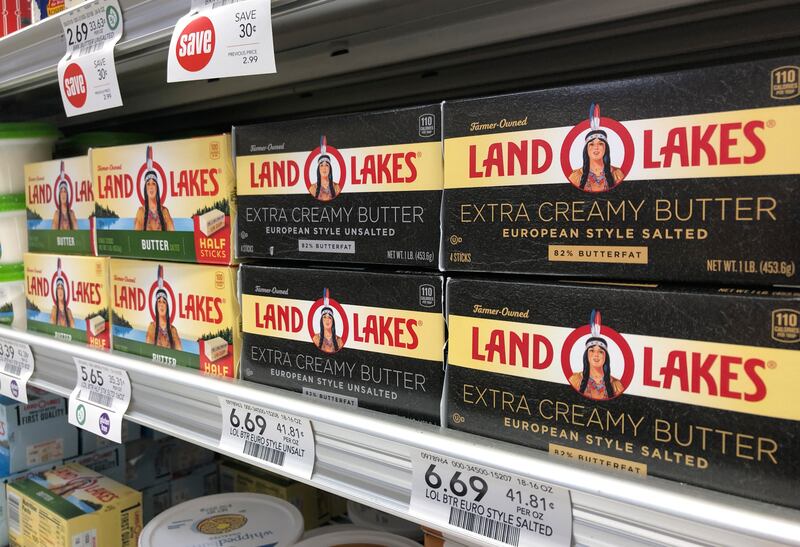There’s a new butter trend in town: butter candles.
But before we discuss how people are making candles out of butter, let’s reflect on another butter-related development that once took the internet by storm.
Last year (in the midst of a butter shortage, no less), butter boards started trending on TikTok and other social media platforms. The concept was simple: you would take a cutting board, smear butter all over it and then use warm bread to scoop it up.
The rise of butter boards spawned a variety of related trends, like buttercream boards, where you’d put a lot of buttercream frosting on a cutting board and use cookies to eat it.
Did butter boards become the new charcuterie board? Not really, because they don’t seem to have caught on. But they were fun to debate — and eat! — while they lasted.
Now, social media users have come up with yet another creative use for butter: butter candles, which are exactly what the name implies.
How to make a butter candle
To make a butter candle, you take some butter and melt it down. Then, you put it in a paper cup with a wick until the butter solidifies. After it sets, you cut a hole the size of the cup’s circumference into the bread, stick the butter candle in the hole and then you can light the candle, so the butter gets melty. You eat the bread around the candle with the butter from the candle.
You could hypothetically also make garlic and herb versions of these candles. Instead of just working with plain butter, you would add garlic and herbs into the melted butter before letting it solidify.
The surge in interest in butter candles has some people asking: Are they really safe to eat?
Are butter candles really edible?
Delish reported that if you want to try a butter candle, you’ll want to make sure that the wick you’re using is edible.
“In addition to using a food-safe wick, you’re going to want to keep a careful eye on your butter,” per Delish. “Like a regular candle, your butter candle shouldn’t be left unattended, so don’t take too long grabbing that loaf of bread from the kitchen.”
Believe it or not, this trend has caught on in fine dining.
Chef Jordan Andino puts butter candles in his restaurant Carriage House, according to the “Rachael Ray Show” website. He believes the butter candles do two things: “One, elevate the experience of every customer that comes in, and what better way than to light butter on fire — what a cool experience. But, also, I hate cold butter. I hate when you rub that butter on bread, and it completely breaks up the bread.”
The chef serves his butter candles as small cubes rather than a big candle, according to Eater. The waiter “promised (a restaurant guest) it would melt in 10 seconds into a dippable pool, but five minutes later, the candle was still burning, so my dining companion and I began scraping the candle and spreading the butter on the bread provided. The butter was delicious and the bread basket gloriously free,” Robert Sietsema wrote for Eater.
The smaller cubes are meant to be safer than bigger candles. With a small cube, there’s less butter to melt, so the process takes less time.
Do butter candles taste good?
In general, are butter candles worth the effort? Here’s what people have said.
One BuzzFeed writer tried to make a butter candle and described the texture as “almost like whipped butter.”
Another writer named Lauren Dozier described her experience making and eating a butter candle for a Spoon University article. Making the butter candle was difficult because the wick got lost in the cup and it was tricky to remove the candle from the cup, she said.
“Despite the trial and error, the final product was something actually resembling a candle, and when lit, it made the surrounding butter pool into a warm melted dip, perfect for sopping up with crusty bread,” Dozier wrote.
Armed with this knowledge about butter candles, I set out to make one. I melted some Kerrygold butter on the stovetop and added some roasted garlic, fresh garlic, a little bit of salt, chopped thyme and oregano.
Using a food-safe wick, I poured the melted butter into a paper cup and let it sit overnight. I popped it in the refrigerator for around an hour before cutting the paper cup off.
But then, things started to go south.
I lit the candle and watched as the top quickly melted. The candle was messier than I expected and I sensed a slightly burnt taste — it could have come from the smell of the wick burning. Still, the butter candle tasted like butter, and the warm, melty quality of it made it better to eat than cold butter.
I don’t think I’ll be making another butter candle anytime soon, but I can sort of understand why they’ve earned some love.


